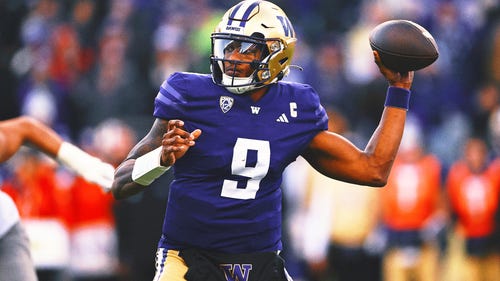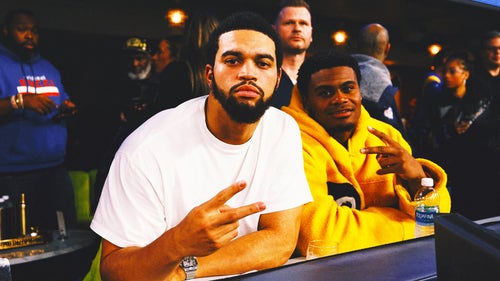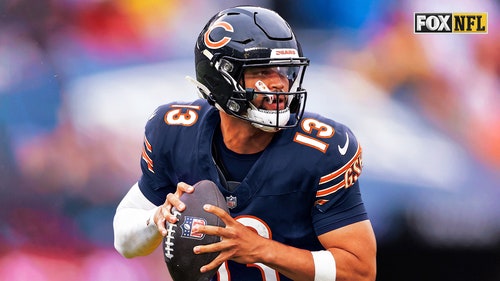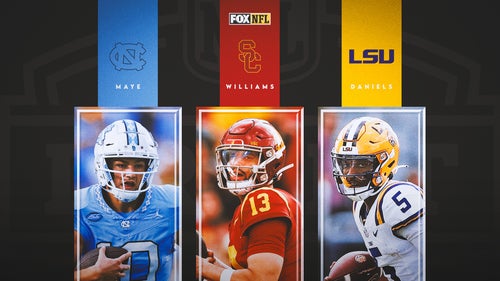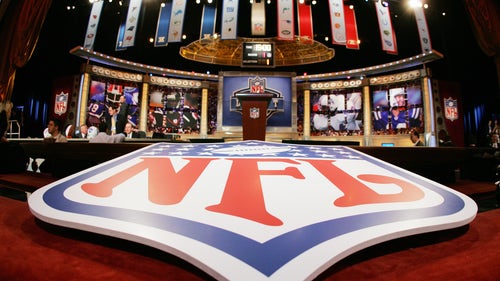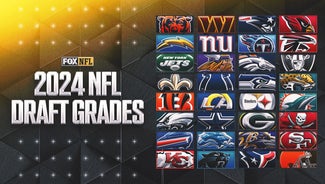
Week 9's most controversial calls
We’re halfway through the NFL season and I’m not sure which is more surprising, the fact that San Francisco is 7-1 or that the 49ers’ new coach, Jim Harbaugh, got more face time Sunday on FOX than Kim Kardashian gets in her reality show.
I’m not saying Harbaugh hasn’t done a great job, because he has. But he seems to protest more than those demonstrating in Occupy Wall Street.
The cameras found him on seemingly every penalty — and San Francisco was penalized nine times. I really can’t blame the director, because quite frankly, Harbaugh was good drama. Except, of course, for those who were officiating the game.
There were two interesting plays in this game that I wanted to point out, one happening near the end of each half:
--First half: San Francisco had the ball, fourth-and-1 at the Washington 11-yard line with 1:55 left in the second quarter. San Francisco led 10-0. The 49ers were called for a false start penalty, making it fourth-and-6 from the 16-yard line. The 49ers had to settle for a field goal.
MY TAKE: This was a false start. It was fourth-and-1 and we have seen teams make sudden shifts, just trying to draw the defense offside. We call this a "no play shift." And you penalize the shifting team.
A shift of two or more players is legal as long as it is smooth and continuous. That was not the case here. That shift was solely done to draw a foul and the officials were alert to this action. That has been on a training tape to the officials before this game, and in my opinion, the crew got this right.
--Second half: Washington had just scored and converted two points to cut the 49ers’ lead to 19-11. Redskins kicker Graham Gano attempted an onside kick that was caught by the 49ers’ Vernon Davis, who was flagged for an invalid fair catch signal.
MY TAKE: The ball was kicked into the ground by Gano and then it popped up into the air. By rule, a valid signal can only be made when a kick is in flight. Once it has hit the ground, a fair catch signal is not allowed.
By rule, the enforcement spot for an invalid fair catch signal is the spot of the signal, with a loss of 5 yards. There is no option to re-kick, which would have given Washington another opportunity.
After watching this game, here’s some advice for young Mr. Harbaugh: We’re only halfway through the season — take some deep breaths and enjoy the ride.
Let’s take a look at some of the other interesting calls from Sunday’s games:
THE GAME: Seattle at Dallas
THE SITUATION: Seattle had the ball, fourth-and-3 from the Dallas 39-yard line with 21 seconds left in the fourth quarter. Dallas led 23-13.
THE PLAY: Seattle quarterback Tarvaris Jackson attempted a pass to Doug Baldwin that was intercepted by Gerald Sensabaugh at the Dallas 14-yard line. It appeared that Baldwin and Sensabaugh went to the ground with simultaneous possession. The replay assistant initiated a review of the interception and the play was upheld.
MY TAKE: I feel this was a simultaneous catch and the ball should have been given to the offense. The back judge originally ruled this a completed pass, but the line judge came down the field and overruled him, calling it an interception by Sensabaugh.
The rule regarding simultaneous possession states that joint possession of a loose ball belongs to the offensive team. But a simultaneous catch is not reviewable. Whomever the officials award the ball to is final.
This play was quickly reviewed, but the only thing that could be looked at by the replay official was whether the pass was incomplete. It was not incomplete; therefore, it had to remain as an interception.
THE GAME: Green Bay at San Diego
THE SITUATION: Green Bay had the ball, third-and 1 at the San Diego 16-yard line with 18 seconds left to go in the second quarter. Green Bay led 21-17.
THE PLAY: Green Bay quarterback Aaron Rogers completed a 16-yard pass to Jordy Nelson for a touchdown. Nelson hit the ground around the 1-yard line and rolled into the end zone. The replay assistant initiated the pass completion ruling, and the play was upheld.
MY TAKE: It’s funny how some of my Twitter followers think I’m automatically wrong when the referee does not agree with what I think should be ruled. Does anybody ever doubt the referee?
Look, I’m all for staying with the call if there’s not indisputable visual evidence. But in this case, I think there was indisputable visual evidence to rule the pass incomplete as Nelson did not have total possession of the ball before the point of the ball hit the ground.
I also feel that Nelson, if it was a catch, was down by contact because his foot contacted the leg of the defender after he supposedly had control. We can agree to disagree, but I have to tell you that I think I’m right – and they aren’t.
THE GAME: Cincinnati at Tennessee
THE SITUATION: Tennessee had the ball, first-and-10 at the Tennessee 21-yard line with 4:42 left in the game. Cincinnati led 21-17.
THE PLAY: Tennessee quarterback Matt Hasselbeck attempted a pass that was batted down by Cincinnati’s Carlos Dunlap, who picked up the ball and ran it into the end zone. The replay assistant initiated the backward pass ruling, and the play was reversed.
MY TAKE: Sometimes you get lucky. Referee Jeff Triplette had the luxury of using the solid 15-yard line to make his ruling. The ball left Hasselbeck’s hand just inside the 15-yard line and touched Dunlap’s hand just beyond the 15. Without a solid line, I don’t think that you would have enough information to overturn this.
By the way, the rule states that in order for a pass to be forward, it must be going forward. If it’s going parallel to the line of scrimmage, it is considered backward.
THE GAME: Atlanta at Indianapolis
THE SITUATION: Indianapolis had the ball, second-and-11 at the Indianapolis 19-yard line with 2:19 left in the first quarter. Atlanta led 14-0.
THE PLAY: Indianapolis quarterback Curtis Painter was attempting to pass but the ball was blocked by Atlanta’s Lawrence Sidbury back to Painter, who caught it and attempted to throw the ball again. That attempt fell incomplete. Painter was called for an illegal forward pass and Atlanta declined the penalty.
MY TAKE: You can only throw one forward pass from behind the line of scrimmage during any down. Painter threw it twice. I know he needs completions, but this isn’t the way to do it.
I’ve seen this happen quite a few times and the quarterbacks usually know that they can’t pass it forward again. The second pass is called an illegal forward pass, and if enforced, the offensive team is penalized five yards from the line of scrimmage and the down is repeated.
In this case, Atlanta declined the penalty since the second pass was ruled incomplete. I can’t wait to see the stats on Painter — one reception for minus three yards?
THE GAME: New York Jets at Buffalo
THE SITUATION: The Jets had the ball, second-and-11 from the Buffalo 20-yard line with 9:11 left in the third quarter. The Jets led 6-0.
THE PLAY: Jets quarterback Mark Sanchez completed a 19-yard pass to Plaxico Burress to the 1-yard line. Buffalo’s Leodis McKelvin was defending on the play.
MY TAKE: I got a lot of tweets suggesting that Burress pushed off on McKelvin to free himself to catch the pass. A lot happened on this play and I think the best decision was to leave the flag in the pocket.
Yes, Burress did push off and contact the defender, but the defender rode Burress beyond the 5-yard restricted zone. I really feel that Burress was just trying to ward off this illegal contact. I didn’t’ see either player creating himself a clear-cut advantage.
I’m not a fan of penalties, so if there’s any question, I’m all for keeping those flags in the officials’ pockets. That, of course, does not apply to player safety fouls.







































































































































